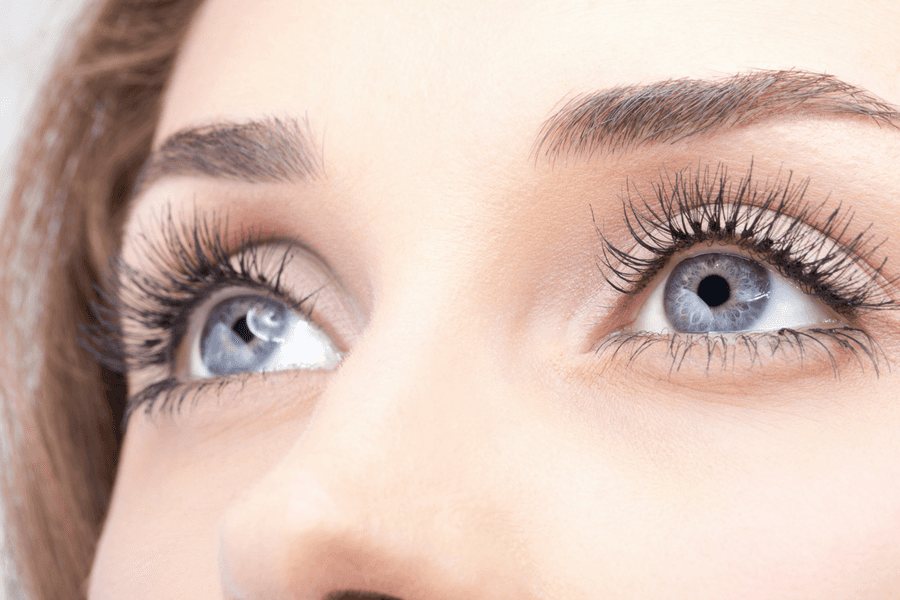Is This Just Dry Eye Or Could I Have Sjogren's Syndrome?
No, it’s not a typo. Sjogren’s - pronounced show-grins - is a type of autoimmune disorder that causes inflammation and damage to various parts of the body; most commonly the tear and saliva glands. This damage results in symptoms ranging from dryness and discomfort to difficulty swallowing and can even affect the lungs and kidneys.
So why exactly does this happen? Let’s start with a quick health lesson. The immune system is responsible for fighting disease and killing harmful viruses and bacteria. However, with autoimmune diseases, your immune system has a hard time knowing when to stop fighting and mistakenly attacks your own body. With Sjogren’s, your exocrine glands - the glands that secrete moisture such as saliva, sweat, tears, breast-milk, gastric mucous, etc - become the main targets.
There are actually two forms of Sjogrens - “primary” and “secondary”. Primary Sjogren’s does not occur alongside any other immunological disorder whereas “secondary” Sjogrens occurs in individuals who have another rheumatologic disease such as lupus or rheumatoid arthritis. The exact cause of Sjogren’s is unknown, but some doctors theorize that it might be due to a combination of genetic predispositions and an exposure to certain viruses and bacteria.
Sjogren's And Your Eyes
Wondering what role Sjogren’s plays in eye health? Firstly, it is one of the most prevalent autoimmune diseases in America affecting an upwards of 4,000,000 people according to the Sjogren’s Syndrome Foundation . Furthermore, many of those living with Sjogren's aren’t even aware of it due to its high rate of misdiagnosis and somewhat difficult diagnosing process.
And what is the most common first symptom you might ask? Dry eyes. In fact, dry eye is such a distinctive part of Sjogren’s that an estimated 1 in 10 dry eye patients also have Sjogren’s - whether they are aware of it or not.
Dry eye occurs in Sjogren’s when the disease causes the immune system to mistakenly attack the glands responsible for the production of tears - the resulting inflammation leads to a reduced tear production and ultimately dry eye.
Eye dryness isn’t just a nuisance either, left untreated dry eyes can cause a host of other ocular issues such as recurrent infections, light sensitivity, blurred vision, corneal abrasions, discontinued contact lens wear, and corneal ulcers. This is of note because dry eye caused by Sjogren’s is more complicated to treat since the issue is coming from the immune system instead of localized to the eye itself. This means the systemic issues have to be treated in tandem with the dryness in order to provide lasting effects.
Depending on the severity of your dryness and the other Sjogren’s related symptoms you are experiencing,your doctor might prescribe a combination of artificial tears, ointments, immunosuppressant medications, or other dryness treatments like punctal plugs or scleral contact lenses.
Other Symptoms Of Sjogren's
Outside of dry eyes, other symptoms of Sjogren’s include:
- a dry, gritty or burning sensation in the eyes
- dry mouth
- difficulty talking, chewing or swallowing
- a sore or cracked tongue
- dry or burning throat
- dry or peeling lips
- a change in taste or smell
- increased dental decay
- joint pain
- vaginal and skin dryness
- digestive problems
- dry nose
- debilitating fatigue
Who Is At Risk?
Since the exact cause of Sjogren’s is still unknown, it is hard to narrow down definite risk factors. However, studies have shown that the majority of Sjogren’s patients are women - a whopping 9 out of 10 in fact - and the average age of diagnosis is late 40s. Although, it can and does occur in all age groups, ethnicities, and in both sexes.
How Is Sjogren's Diagnosed?
As mentioned previously, Sjögren’s often goes undiagnosed or is misdiagnosed. This is because the symptoms of Sjögren’s often mimic a range of other things from menopause, drug side effects and allergies, to other medical conditions such as lupus, rheumatoid arthritis, fibromyalgia, chronic fatigue syndrome, and multiple sclerosis. Also, since the symptoms of Sjogren's do not always appear at the same time and can involve several different parts of the body, symptoms are often treated individually without realizing there is a systemic disease present. Because of this, the average time for diagnosis - according to the Sjogren’s Syndrome Foundation - ends up taking a minimum of 3 years.
There is not one specific test to confirm a diagnosis of Sjogren’s. Instead, your doctor will take your symptoms and medical history into consideration along with one or more blood tests that will check for certain antibodies, proteins, and inflammation. Other criteria your physician might look at to arrive at a diagnosis are salivary and lacrimal gland function since these are the two most commonly affected glands. If you are suffering from dry eyes, your eye doctor will also likely perform a few diagnostic tests to assess the severity of the dryness and to rule out any damage to the front of your eyes.
Blood tests your physician may perform include:
- ANA (Anti-Nuclear Antibody)
- RF (Rheumatoid Factor)
- SS-A (or Ro) and SS-B (or La)
- ESR (Erythrocyte Sedimentation Rate)
- IGs (Immunoglobulins)
The ophthalmologic (eye) tests include:
- Schirmer Test
- Rose Bengal and Lissamine Green
The dental tests include:
- Salivary Flow
- Salivary scintigraphy
- Salivary gland biopsy (usually in the lower lip)
Is There A Cure?
There is currently no cure for Sjogren’s, but there are treatment options that can help improve some of the symptoms. Over the counter eye drops and mouth preparations can help, but there are also prescription products available for more severe cases of dryness. This includes Evoxac, Salagen, NeutraSal, Restasis, and Lacrisert.
To treat inflammation internally, patients are often prescribed immunosuppressive medications. Since Sjogren’s affects everyone differently and can involve multiple areas of the body, it is important that a personalized plan is developed by you and your physician that also includes special instruction from your dentist and eye care specialist.
For more information on Sjogren’s visit the
Sjogren’s Syndrome Foundation website . If you suspect you or a loved one might be suffering from symptoms of Sjogren’s the best thing you can do is be proactive in your care. Make sure to have annual visits to your eye doctor as well as your primary care physician and be sure to communicate any symptoms you are experiencing along with your concern that it might be Sjogren’s related.
Stay tuned to the Eye-Q blog in the month of May for even more eye health awareness tidbits and a special Mother’s Day post dedicated to women’s eye health specifically.







